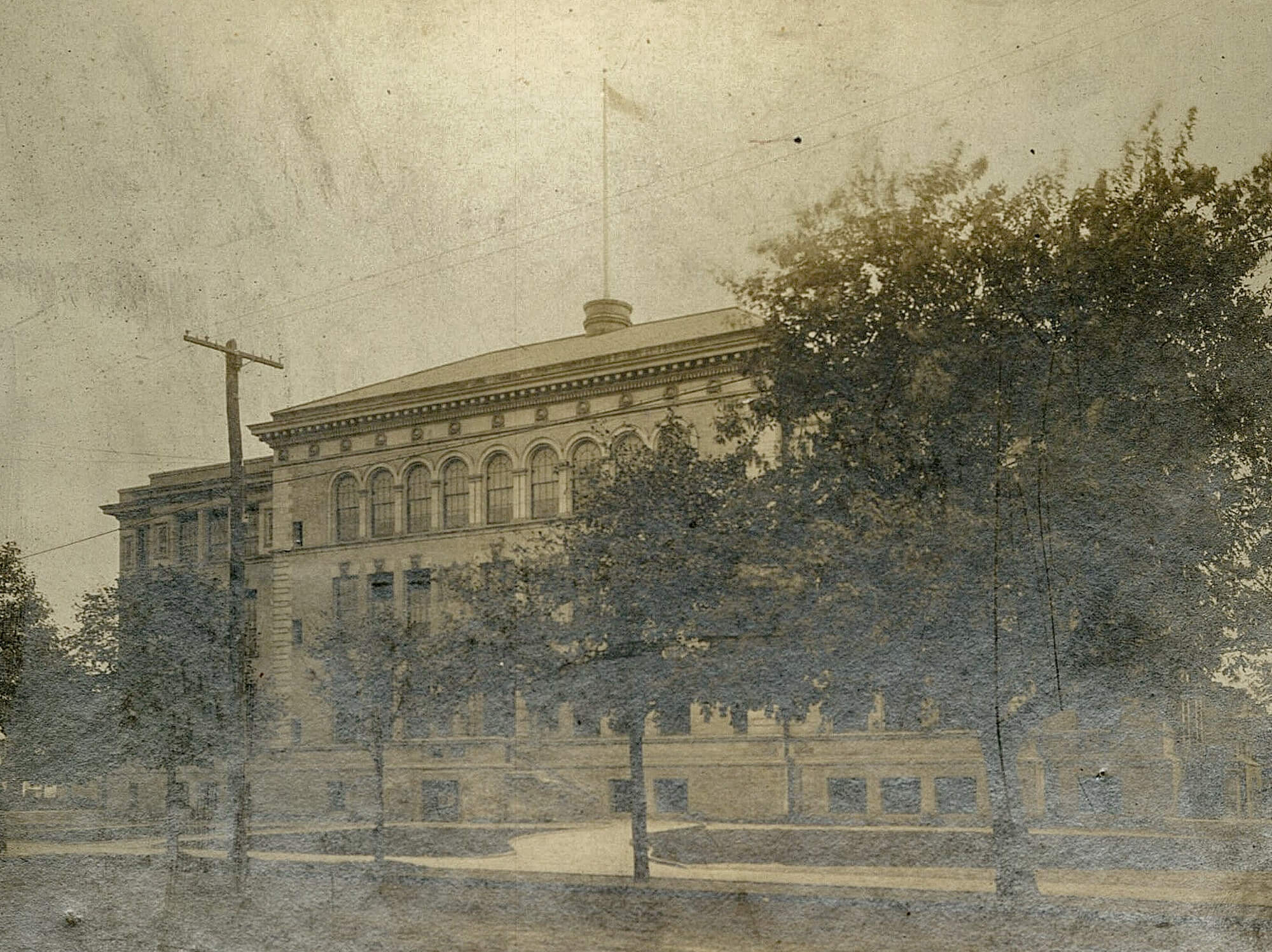Borough Park Students Make Connections With Brooklyn History and Uncover the Story of P.S. 131
It began with the discovery of a trove of historic documents long forgotten in the back recesses of an art cupboard.

A class in 1909. Photo via P.S. 131
It began with the discovery of a trove of historic documents long forgotten in the back recesses of an art cupboard.
A package was unwrapped to reveal carefully handwritten attendance records and notes on student progress from 1910 to the 1940s. More digging in the building turned up albums filled with the solemn faces of children staring out from dozens of photographs taken in 1909 in familiar looking classrooms.

Art teacher Helen Barry at P.S. 131 had uncovered a historian’s dream — primary sources that brought to life the students who once assembled in the classrooms of the Borough Park school at 4305 Fort Hamilton Parkway. The tantalizing glimpse into the past provided a golden opportunity for educators at the school, who leaped at the chance to engage their students in a research hunt to track down the history of their school.
“The documents were stacked on the shelf and bound in simple brown string,” Barry told Brownstoner. “When I dusted off the cover of the first stack and saw the perfect, neat cursive writing, and then how old they were, I realized that if they contained information on students they would be an invaluable window into the history of the school and the community.”
Since the archival material was uncovered in 2014, teachers at P.S. 131 have collaborated with Brooklyn Connections, Brooklyn Public Library’s school outreach program, to lead almost 100 students into a deep dive into the architecture of the building, the lives of the students before them and the changing neighborhood around them.

Focused on introducing middle and high school students to the world of research, Brooklyn Connections has worked with more than 15,000 students since the program began in 2006. Through visits to the archives of the Brooklyn Collection and sessions with educators in the classroom, students hone their critical thinking skills and learn how to take notes, properly cite sources and judge the validity of sources.
Year-long study projects for students are tailored to the interests of each class, and the discovery of the P.S. 131 materials provided a perfect starting point for participating students from the school.
This year, Barry, fellow P.S. 131 teacher Melissa Hannon and Brooklyn Connections educator Kaitlin Holt guided 15 fifth grade students in developing their research muscles. Lessons focused on specific skills and utilized the materials discovered at P.S. 131 along with photographs, maps, newspapers and other primary sources from the Brooklyn Collection at the Brooklyn Public Library.

The students discovered that P.S. 131 was built between 1900 and 1901 and designed by New York City’s master school builder, C.B.J. Snyder. Starting as the Superintendent of School Buildings for Manhattan and the Bronx in 1891, he became the architect for all the city’s schools with the consolidation of New York in 1898.
By the time he retired in 1923, he was involved with the design of more than 400 projects, it is believed. In Brooklyn, some of the school designs included Erasmus Hall High School, George Westinghouse Vocational and Technical High School and the Manual Training School (now John Jay School).

Less than 10 years after completion the school was already too small to meet the needs of the burgeoning population and in 1908 construction started on an annex, meant to temporarily meet the needs of the school.
Among the primary sources the students examined were newspapers from the 1930s when parents protested the conditions in the annex, including lack of heat and toilets. The annex was demolished and construction began on a permanent addition that was completed in 1939.

Armed with information about the construction of the building, the young researchers scoured the building itself, looking for clues and comparing what they found with the historic images. They found vintage light fixtures, an old shower room in a classroom closet, incinerator doors, and door frames that hadn’t changed much since the original construction.
At the end of the year-long study project Brooklyn Connections hosts an annual convocation at the Central Library, where students get to see each other’s projects and practice their presentation skills.

Over two days, the 1,618 students that made up the Brooklyn Connections class of 2017-2018 talked about transportation, the Revolutionary War, redevelopment and a host of other Brooklyn topics. The P.S. 131 students prepared an exhibit board and gave a PowerPoint presentation about the “histories and mysteries” they uncovered. Eager to share their new history knowledge with a wider audience, they also set up a Twitter account, @ps131khistory.
For Barry, having her students participate in the program has helped engage their curiosity. “Investigating the clues that are present in material culture is eye-opening for many of our students,” she said. “It gives me hope that they will continue to look closely and think about the world around them in different ways.”
Related Stories
- How Brooklynites Fought for Equality Is Documented in the Civil Rights Collection at BPL
- The Brooklyn Children’s Library and How It Grew Thanks to Founder Clara Whitehall Hunt
- C.B.J. Snyder: New York City’s Master School Builder
Email tips@brownstoner.com with further comments, questions or tips. Follow Brownstoner on Twitter and Instagram, and like us on Facebook.









What's Your Take? Leave a Comment